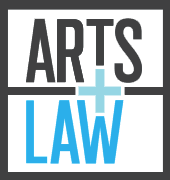Brisbane 2032 Olympics – Artists’ Rights
In this information sheet, we answer questions about artists’ rights for the 2032 Brisbane Olympics, including the use of the Olympic symbol, contract, copyright, moral rights and Indigenous Cultural and Intellectual Property (ICIP).
With the games approaching, it’s important for artists to understand their rights when their work is commissioned for Olympic-related use.
The Olympic Symbols
The Australian Olympic Committee are allowed to prevent people from reproducing the Olympic symbols without permission. The Olympic symbols, such as the Olympic rings, are protected and regulated under the Olympic Insignia Protection Act. Under these laws, putting the Olympic rings on an object without permission from the Australian Olympic Committee is considered infringement.
The Olympic symbols are protected under copyright. These symbols are unique as copyright in the Olympic rings do not expire. Furthermore, designs and trade marks featuring the Olympic symbols cannot be registered.
For more information regarding the use of symbols in art, such as flags, Coats of Arms or the Australian National Anthem, Arts Law has prepared an information sheet here.
Commissioned Works
Artists may be engaged or commissioned under a contract to produce art for the Olympics, such as for paraphernalia.
A contract is a legally enforceable understanding between two or more persons or legal entities (the contracting parties), where the parties exchange promises (“something for something”). The “something” usually takes the form of money, services, property or rights.
Although “agreement” is often used as a synonym for “contract”, not all agreements are legally enforceable as they may lack certain essential elements to be a legally binding contract.
A contract must consist of 4 elements: an Offer, Acceptance of the offer, Consideration, or the exchange of something of value, and the Intention to create legal relations. Contracts can take a variety of forms, whether orally, in writing, partly oral and partly in writing, or made by people’s actions. Contracts can also take place through electronic communications such as emails or through internet ecommerce systems.
ArtsLaw advises artists to conduct their own research into the entity they are entering a contract with, as well as ensuring the deal meets all their requirements and concerns. We also advise artists to put everything in their contract and get it in writing. Many disputes can be avoided if the agreement is in or is confirmed in whole by writing. Another good practice is to retain a copy of all documents signed and read, particularly the original signed agreement once it has been fully signed.
For more information on contracts, see the Arts Law information sheet on contracts here as well as Contracts: a glossary of jargon and Contracts: getting it write/right for information on some contractual pitfalls, when terms are implied in contracts and the rectification of omissions of terms.
Copyright
Copyright is a mechanism for artists to protect and monetise their creativity. In Australia, copyright is an automatic right, it is free and there is no need to register copyright. It protects two categories of subject matter: ‘works’, being literary works (textual material), dramatic works, musical works and artistic works; and ‘subject matter other than works’, being sound recordings, films, television and sound broadcasts and published editions.
The ‘author’ of a work (i.e a literary, dramatic, musical or artistic work), owns the copyright in the work. The ‘maker’ of a sound recording, film or broadcast is the copyright owner. However, if it is a commissioned work, the general rule is that the copyright owner is the commissioner. For example, if an artist is commissioned by the Australian Olympic Committee to produce an artwork for use on merchandise, the copyright owner is the Australian Olympic Committee.
Generally, copyright lasts for the life of the creator plus 70 years. This varies depending on the subject matter, when it was created, when it was made public, and whether the creator is known. Once copyright expires it is in the ‘public domain’ and can be used without permission.
For more information on copyright, such as licensing, joint authorship and copyright infringement, Arts Law has compiled an information sheet for reference here.
Moral Rights
Moral rights are personal legal rights of creators in respect of certain copyright material, that exist separately to copyright. Unlike copyright, moral rights cannot be assigned or given away. Moral rights protect the creative reputation of certain artists.
In Australia, there are three recognised moral rights:
- The right to be attributed as the author of your work, film or performance.
- The right not to have your work, film or performance, falsely attributed.
- The right of integrity also known as the right to prevent derogatory treatment of your work, film or performance.
Moral rights apply to:
- creators of literary, dramatic, musical and artistic works;
- principal director(s), principal screenwriter(s) and principal producer(s) of films; and
- performers of live performances including when the live performances are captured on a sound recording. (Performers in a film do not get moral rights.)
The right to be attributed requires the prominent identification of the creator where an ‘attributable act’ is undertaken, such as reproduction or performance.
The right of integrity prohibits acts which would amount to derogatory treatment of the artist’s material in a manner that is prejudicial to the artist’s honour or reputation. For example, the distortion or mutilation of works in a way that diminish an artist’s reputation breaches the right of integrity.
Moral rights generally last for the duration of the copyright. Some moral rights, such as the right to integrity of authorship in relation to a film expires when the author dies.
It should also be noted that agreements that deal with copyright also encompass moral rights to ensure copyright material can be used as intended and the interests of the creator are addressed.
For more information on Moral Rights, see Arts Law’s information sheet here.
Disclaimer
The information in this information sheet is general. It does not constitute, and should be not relied on as, legal advice. The Arts Law Centre of Australia (Arts Law) recommends seeking advice from a qualified lawyer on the legal issues affecting you before acting on any legal matter.
While Arts Law tries to ensure that the content of this information sheet is accurate, adequate or complete, it does not represent or warrant its accuracy, adequacy or completeness. Arts Law is not responsible for any loss suffered as a result of or in relation to the use of this information sheet. To the extent permitted by law, Arts Law excludes any liability, including any liability for negligence, for any loss, including indirect or consequential damages arising from or in relation to the use of this information sheet.
© Arts Law Centre of Australia
You may photocopy this information sheet for a non-profit purpose, provided you copy all of it, and you do not alter it in any way. Check you have the most recent version by contacting us on (02) 9356 2566 or tollfree outside Sydney on 1800 221 457.
The Arts Law Centre of Australia has been assisted by the Commonwealth Government through the Australia Council, its arts funding and advisory body.




